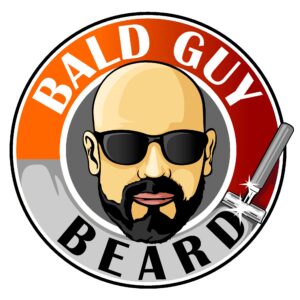How long does it take razor bumps to go away due to shaving?
Razor bumps generally last a few days to a week before they tend to clear up on their own. In more severe cases it might take up to 2 weeks for them to clear. Razor bumps tend to occur more frequently amongst men of African and Indo-European ancestry and men who have naturally curly facial hair. While you can’t change your genetics, you can reduce the chances of razor bumps. Exfoliate the skin in question, wash frequently with a mild facial soap, avoid use of a lift and cut razor ad instead use a double edge (DE) single blade razor. Also use a sensitive skin shaving cream and never dry shave.
What Are Razor Bumps?

Razor bumps are inflamed areas on the skin that tend to occur when a shaved hair grows back underneath the skin rather than through the hair follicle as it should.
They can appear as inflamed reddish-coloured bumps but may also appear with white pus similar to acne.
Razor bumps and ingrown hairs are influenced by genetics and a predisposition for some men to grow naturally curly hair. When hair grows out of the follicle and gets shaved, some curly hairs have a tendency to curl downwards and regrow underneath the skin, producing a bump and inflammation of the skin.
Razor or shaving bumps can also occur due to other hair removal techniques such as waxing or plucking. When you remove hair underneath the skin from the root, skin cells grow over the hair and as the hair regrows, it is pushed downwards, producing the noticeable bump on your skin.
How To Reduce Razor Bumps and Ingrown Hairs

While we can’t change our genetics and disposition to curly hair, we can reduce the chances of razor bumps and ingrown hairs through proper grooming and shaving habits.
- Exfoliate your skin. Use a loofah with face wash to regularly lightly wash your face. This will help to remove dead skin, oils, and may help to loosen hairs before they become ingrown.
- Use a single blade razor. Consider a Double Edge (DE) single blade razor. Multi-blade, lift-and-cut razors (and electric shavers) lift beard hairs and then shave them so that the remaining hair falls back under the skin increasing the chance of ingrown hairs and thus razor bumps. A single blade razor cuts your hair at skin level, not below the skin.
- Use a sensitive skin shaving cream. Consider using a shaving cream from a tube or shaving soap rather than canned shaving cream. Canned shaving creams have additives to foam up. A nice natural or organic shaving cream from a tube may cause less irritation to your skin.
- Moisturize after shaving. Shaving can irritate and dry out the skin. Consider a natural, alcohol-free (alcohol dries the skin) moisturizer after you’ve shaved. It may help to prevent your skin from drying out.
- Shave less frequently. If you let your facial grow longer before shaving you may reduce the chance of ingrown hairs. Consider growing a beard or other facial hair too.
- Consider the use of salicylic acid or glycolic acid. Both can help to remove skin cells that clog the pores and prevent hair from growing out of the follicle above the skin surface, leading to razor bumps. Salicylic acid is a common ingredient in many anti-acne cleansers and has an anti inflammation property too. Glycolic acid helps to remove old skin cells from the surface of the skin to avoid clogging.
Avoid using tweezers or scissors to try and loosen ingrown hairs as you may end up bleeding and infecting the area in question. At this point, time and the suggestions above are your best bet to deal with razor bumps.
For chronic cases, see a dermatologist for a professional opinion rather than experimenting with various at home remedies or buying products that may not help your specific case.

Conclusion
- How long does it take razor bumps to go away? Usually within several days to a week. Up to 2 weeks in more severe cases.
- Consider using a single blade razor as mentioned above. Multi-blade, lift-and-cut razors cut the hair below the skin which can lead to ingrown hairs.
- Salicylic acid is used in many anti-acne cleaners and has anti-inflammation properties that may help with clogged pores and hair follicles that get blocked, leading to ingrown hairs.
- Glycolic acid may also help reduce ingrown hairs by removing dead skin cells that can also lead to razor bumps.
- See a dermatologist to discuss your specific case when it’s chronic and adjusting your washing and shaving routine doesn’t help.
- Don’t shave over razor bumps as it can make them bleed.
Do you experience razor bumps? How do you deal with them?


